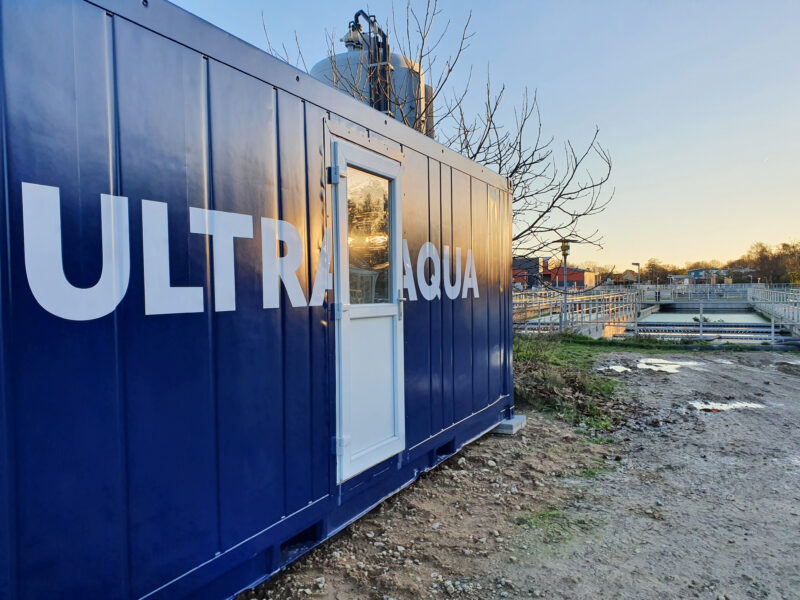Solution provider

ULTRAAQUA is an international manufacturer of advanced UV water disinfection systems for a wide range of water treatment applications.
R&D Project
Wastewater management
Wastewater treatment


ULTRAAQUA is an international manufacturer of advanced UV water disinfection systems for a wide range of water treatment applications.
Add the case to your visit request and let us know that you are interested in visiting Denmark
A MUDP project (The Environmental Technology Development and Demonstration Program) at the Slagelse Wastewater Treatment Plant, shows that low-dose ozonation and vacuum-UV can extend the lifespan of used activated carbon filters, so they can purify micropollutants, such as industrial chemicals and medicine residues while reducing carbon footprint.
The purpose of the project has been to test new, cost-effective solutions for removing medicines and other micropollutant substances as well as antibiotic-resistant bacteria.
The Ministry of Environment of Denmark believes that Denmark may face difficulties in terms of meeting the upcoming stringent requirements for micropollutants, defined by the EU’s proposal for an urban wastewater directive, as the price of activated carbon is high and needs to be replaced relatively frequently.
Additionally, the concentrations of micropollutants in the nearby stream, which the Slagelse Wastewater Treatment Plant discharges into, needs to be reduced.
By combining all three polishing technologies – ozone, used activated carbon, and vacuum UV – and with a high dose of ozone, nearly 100% of the directive proposal’s substances (precisely 99.7%) are removed.
The combination of low-dose ozone and activated carbon removes about 90% of the directive proposal’s substances – although with minor exceedances of Predicted No-Effect Concentration (PNEC) for individual micropollutant, while the combination of used activated carbon and vacuum-UV removes more than 95% – and without exceedances of environmental effect concentrations.
Additionally, higher ozone dosing potentially means bromate formation – a problem many Danish wastewater treatment plants struggle with – while there is no bromate formation using low-dose ozone nor with vacuum-UV.
The results from the MUDP project at the Slagelse Wastewater Treatment Plant show that it is possible to use old spend activated carbon (four-year-old coal) in combination with low-dose ozone or vacuum UV – thus reducing cleaning costs – while the removal rate of the substances defined in the EU wastewater directive is over 90%.
The old spend activated carbon, which only removes 5-40% of the substances defined in the EU directive-proposal, is now down to a price of about 0.15 DKK/m3. The preliminary operating statements show that low-dose ozone and vacuum-UV each cost around or slightly over 1 DKK/m3.
“Experiences from Slagelse show that if you want to remove at least 80% of the directive proposal’s substances with activated carbon, the price becomes roughly 2 DKK/m3″ says Ulf Nielsen, Consulting Manager at ULTRAAQUA.
After a 15 month period, the results show that the installed plant can extend the lifespan of a used carbon filter with both low-dose ozonation and vacuum-UV.
The practical experiences from this project have thus provided valuable input on which polishing technologies should be chosen for an upcoming full-scale solution.